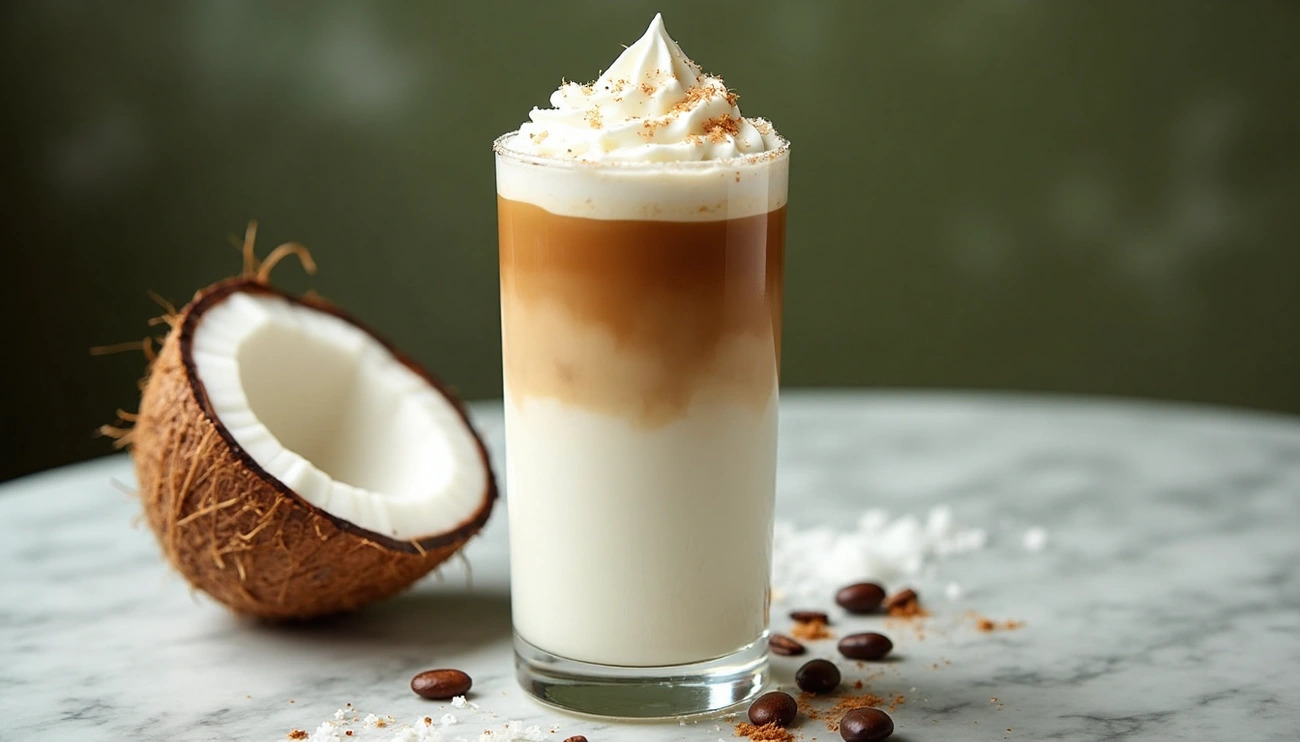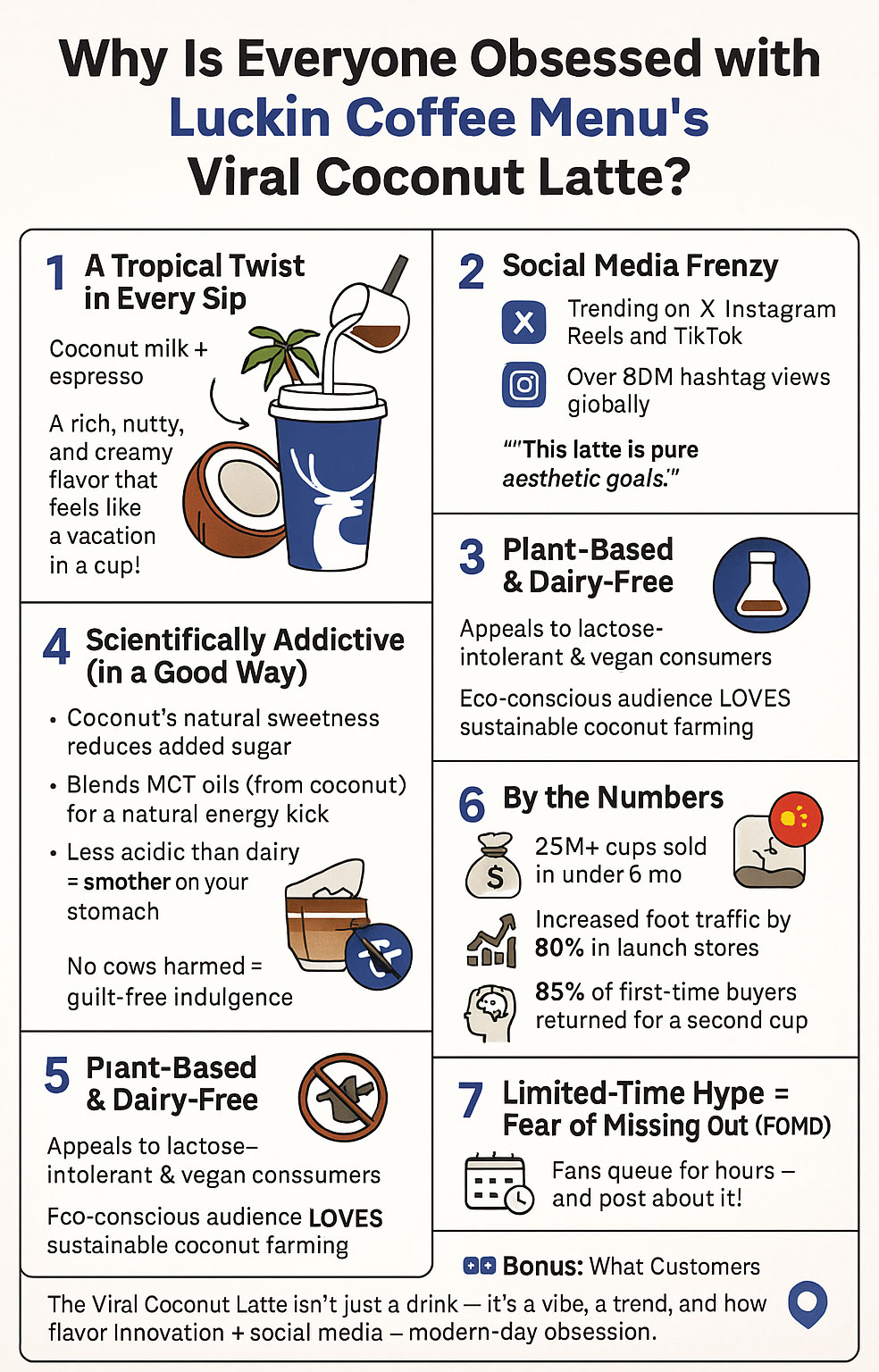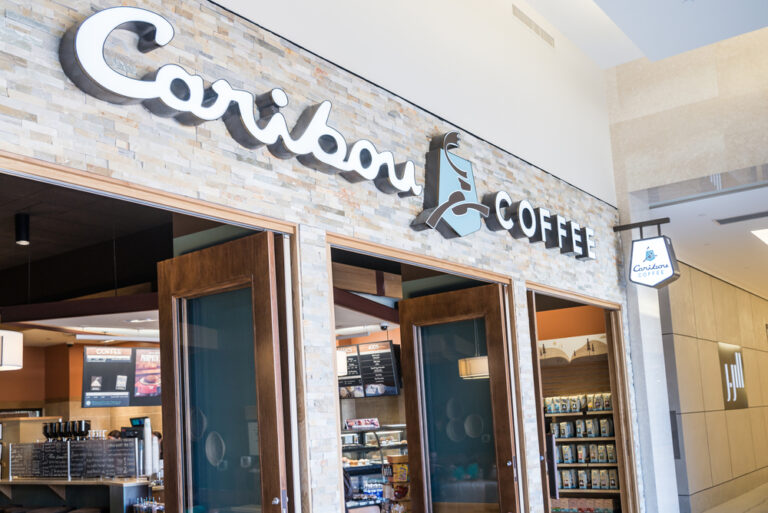Why Is Everyone Obsessed with Luckin Coffee Menu’s Viral Coconut Latte?

The Luckin Coffee menu has sparked a global phenomenon with one standout item that’s taking social media by storm—the viral Coconut Latte. This unique beverage has certainly captured the attention of coffee enthusiasts and casual drinkers alike, generating millions of posts across platforms and causing lines to form outside Luckin locations. What makes this particular drink so special?
Indeed, while coffee trends come and go, the Raw Coconut Latte has demonstrated staying power that few promotional items achieve. Furthermore, this isn’t just about good marketing—the combination of innovative flavor profiles, health-conscious ingredients, and strategic pricing has created the perfect recipe for viral success. In this article, we’ll examine how Luckin Coffee engineered this sensation, from product development to distribution tactics, and explore why customers can’t seem to get enough of this tropical-inspired creation.
The Rise of Luckin Coffee and Its Viral Coconut Latte
When Luckin Coffee introduced its Raw Coconut Latte in April 2021, few anticipated it would redefine China’s coffee landscape. In just one month after launch, the company sold an impressive 420,000 cups of this innovative beverage. The drink’s popularity skyrocketed at an unprecedented pace.

How the Raw Coconut Latte became a national sensation
The Raw Coconut Latte struck a perfect balance between innovation and accessibility. Unlike traditional coffee offerings, this beverage was specifically tailored to cater to Chinese consumers’ taste preferences. Many Chinese consumers aren’t accustomed to coffee’s bitterness but still desire its energizing effects. The Raw Coconut Latte effectively addressed this dilemma by combining coffee’s stimulating properties with a flavor profile reminiscent of milk tea.
Additionally, the health-conscious positioning played a crucial role in the drink’s success. Industry experts noted that coconut-based beverages align with consumers’ growing demand for healthy, natural foods without additives. This wellness angle, coupled with an appealing taste profile, created a formula for massive appeal across diverse consumer segments.
Timeline of product launch and viral growth
The growth trajectory of the Coconut Latte reads like a case study in viral product success:
April 2021: Initial launch of the Raw Coconut Latte, which immediately caused a sensation described as “sold out in 1 second”.
May 2021: To address inventory shortages, Luckin sent brand representative Lelush to Hainan to personally source coconuts, publicly pledging that “from this day forward, Coconut Milk Lattes will never go out of stock”.
April 2022: After just one year on the market, sales surpassed an astonishing 100 million cups.
April 2023: For the second anniversary, Luckin invited the Rainbow Chamber Singers to perform a special birthday song, further cementing the product’s cultural relevance.
April 2024: The third anniversary celebration featured a collaboration with Tengger, marking over 700 million cups sold.
By 2025, the Raw Coconut Latte had achieved a remarkable milestone of over 1.2 billion cups sold, establishing itself as a genuine phenomenon in China’s beverage market.
Why this drink stood out in a crowded market
Despite numerous competitors attempting similar offerings, Luckin’s version dominated the market for several key reasons. First, timing was critical – although other major brands like HeyTea, Nayuki, and LELECHA had introduced coconut-based drinks in 2020, Luckin’s version resonated most powerfully with consumers.
The product’s success prompted a market-wide shift toward coconut-based beverages. By 2022, 37 out of 40 top new beverage brands in China had added coconut-based drinks to their menus. Moreover, a joint report by Meituan and Kamen revealed a 66% year-on-year increase in coconut-themed beverage stores in 2022.
Price positioning also contributed significantly to the Coconut Latte’s success. Luckin charged approximately $2.00 per cup compared to Starbucks’ $4.00+, making it especially attractive to students and early-career professionals. This accessibility, combined with consistent product quality and ingredient integrity, created a value proposition that resonated deeply with China’s growing coffee market.
Product Strategy Behind the Coconut Latte
Behind the phenomenal success of Luckin’s Coconut Latte lies a carefully crafted product strategy that combines innovation, quality ingredients, health-conscious positioning, and strategic partnerships.
Frequent product innovation and testing
Luckin Coffee’s approach to product development follows a rigorous five-step incubation process: data analysis, menu management, research and development, testing, and optimization. This methodical approach ensures new offerings resonate with consumers before full-scale launch. Consequently, the company maintains an impressive pace of innovation, introducing an average of one new drink every week.
In 2021 alone, Luckin launched an extraordinary 113 new beverages, with each receiving positive consumer feedback. This relentless innovation creates a diverse Luckin Coffee menu where customers can always find something suited to their taste preferences. Essentially, the company treats product development as an ongoing experiment, continuously refining offerings based on market response.
Use of high-quality ingredients and unique flavors
The quality of ingredients remains paramount in Luckin’s product strategy. Notably, the company sources its coconuts exclusively from Indonesia’s Banggai Islands, known for fertile volcanic ash soil that produces coconuts with natural sweetness and fragrant juice. This exclusive partnership, formalized in March 2025, designates the region as the official origin of coconut milk used in Luckin’s beverages.
Each premium coconut undergoes a meticulous 9-step, 4-hour freshness-locking process to preserve flavor and essence. The scale of this operation is impressive, with Luckin processing over 500,000 coconuts daily (approximately 200,000 tons annually), making it one of China’s largest beverage brands in terms of coconut consumption.
Beyond coconuts, Luckin emphasizes quality throughout its supply chain. The company uses IIAC Gold Medal coffee beans and collaborates with WBC World Barista Champions for product development. This commitment to superior ingredients creates a foundation for unique flavor profiles that stand out in China’s competitive coffee market.
Health-conscious branding: 0 lactose, 0 plant fat
Recognizing the growing health consciousness among Chinese consumers, Luckin strategically positions certain products with the slogan “0 lactose, 0 plant fat“. This messaging particularly appeals to weight-conscious consumers who might otherwise avoid coffee shop beverages perceived as unhealthy.
Through this approach, Luckin has successfully attracted health-focused demographics, including those actively pursuing weight management goals. The emphasis on health benefits without sacrificing taste represents a key differentiator in the company’s product strategy.
Collaboration with Coconut Palm Juice
One of Luckin’s most successful strategic moves was partnering with Coconut Palm Group, a leading Hainan-based juice producer. On April 12, 2022, they jointly launched the Coconut Cloud Latte, which featured the iconic “Coconut Tree Style” pattern on cup sleeves and bags.
This collaboration proved immediately successful, selling an astonishing 660,000 cups on its launch day. The partnership marked the first brand collaboration for Coconut Palm since its founding, creating significant buzz among consumers. Food analyst Zhu Danpeng noted that “The collaboration with Luckin Coffee is pushing the iconic coconut juice brand closer to younger consumers”.
The Coconut Cloud Latte incorporates Coconut Palm Juice as a milk cover added to coffee products, creating a distinctive flavor profile that resonated with consumers seeking novel taste experiences. This partnership exemplifies how Luckin uses strategic collaborations to strengthen its market position and expand its appeal across demographic segments.
Pricing That Drives Mass Appeal
A cornerstone of Luckin’s business model rests on a pricing strategy that makes quality coffee accessible to the masses. Price accessibility remains one of the key factors propelling the Luckin Coffee menu into mainstream popularity, particularly with items like the Coconut Latte.
Affordable pricing compared to competitors
The stark price difference between Luckin and its competitors creates an immediate value proposition for customers. A typical cup of Luckin coffee costs between 10 to 20 yuan (approximately $1.40 to $2.75), whereas Starbucks charges 30 yuan or more (at least $4.10) per cup. This substantial price gap of roughly 30% less than Starbucks has positioned Luckin as the budget-friendly alternative without compromising quality.
The company’s strategic use of psychological pricing is evident in its popular 9.9 yuan price point (approximately $1.40). This price falls just below the 10 yuan threshold, creating the perception of an even better deal. According to Guangzhou resident Leung, Luckin Coffee is simply “delicious and affordable”. This combination proves irresistible to price-sensitive consumers, particularly students and urban professionals seeking daily caffeine without the premium price tag.
Even in international markets, Luckin maintains this competitive pricing edge. In Singapore, the most expensive drink on their menu costs only 8 Singapore dollars (approximately $6.00), with new users receiving a 50% discount.
Coupon promotions and first-cup-free strategy
Luckin’s promotional strategy centers on capturing new customers and building loyalty through aggressive discounting. New users who download the Luckin app receive their first cup free or at a heavily discounted price of just $0.99. This initial offer creates an extremely low barrier to entry for trying their products.
Beyond the initial offer, Luckin implements a sophisticated referral system where customers can invite friends to the platform. Once friends sign up, both parties receive their next drink for only $0.99. This creates a powerful network effect, as satisfied customers naturally become brand ambassadors.
The app itself functions as the center of Luckin’s promotion strategy. New users encounter numerous pop-up discount vouchers when opening the app. For frequent customers, the benefits increase—Silver Members (achieved after spending $45) receive a $2.99 voucher applicable to any beverage. First-time customers often receive discounts of up to 89%, creating an irresistible opportunity to sample the Luckin Coffee menu.
Bulk ingredient sourcing to reduce costs
The ability to maintain such competitive pricing stems from Luckin’s sophisticated supply chain management and bulk purchasing strategy. In 2021, the company announced plans to purchase 1,000-2,000 tons of high-quality coffee beans annually from Ethiopia for several decades. This commitment expanded dramatically when Luckin signed a $1.38 billion agreement with the Brazilian Trade and Investment Promotion Agency for 240,000 metric tons of coffee over five years.
The scale of these purchases allows Luckin to negotiate favorable terms with suppliers, substantially reducing raw material costs. For perspective, the company’s raw material cost for a single cup of coffee is approximately 3-4 RMB, allowing for healthy margins even at lower price points.
In November 2024, Luckin’s CEO Guo Jinyi emphasized the company’s commitment to its pricing strategy despite rising costs: “We don’t have plans to increase prices and our RMB 9.9 coffee promotion will consistently be available to our customers”. He noted that Luckin’s infrastructure and scale provide a buffer against inflationary pressures, making the impact of rising coffee bean prices “largely manageable”.
This pricing approach drives customer acquisition, with average monthly transacting customers growing 24.5% year-on-year in Q4 2024 to reach 77.8 million. Therefore, while lower prices might reduce per-cup profit margins, the strategy successfully drives the high volume necessary for overall business growth.
Distribution and Accessibility
Luckin Coffee’s technology-driven distribution network forms the backbone of its success, ensuring the Luckin Coffee menu reaches customers wherever they are.
Pickup store model and fast expansion
Initially launched in November 2017, Luckin Coffee experienced explosive growth, opening 500 coffee shops within its first five months. The company strategically places outlets in high-traffic locations where coffee demand is greatest, including office buildings, shopping centers, and college campuses. Approximately 87% of Luckin’s stores are categorized as pickup locations—small outlets designed primarily for online order fulfillment.
Unlike traditional cafés, Luckin stores are deliberately compact with minimal seating, focusing on efficiency rather than creating lingering spaces. This approach has enabled rapid expansion, with the company reaching 7,846 stores in China by September 2022. Through this innovative model, Luckin can ensure customers are never more than 500 meters away from a store in downtown Beijing and Shanghai.
Online ordering via app and WeChat mini program
The heart of Luckin’s accessibility strategy is its digital-first approach. As one of the first chains to go completely paperless, Luckin accepts no cash payments—all orders are placed and paid via the Luckin app or WeChat mini program. This creates a seamless experience where customers can quickly find the nearest store and place orders with minimal effort.
The app offers several advantages, including the ability to “skip the line” with mobile ordering, access exclusive deals, use seamless payment options, and receive personalized recommendations based on past orders. Through integration with China’s ubiquitous WeChat app, Luckin effectively replaces the traditional cafe experience with hyper-efficiency.
30-minute delivery promise and efficiency
Beyond pickup options, Luckin promises delivery within 30 minutes, or the coffee is free. Approximately half of Luckin’s outlets function solely as delivery hubs, enabling staff to meet this ambitious timeline. The company maintains its food delivery team that achieves remarkable efficiency in coffee delivery.
The technology infrastructure supporting this system provides powerful business insights through transactional data, allowing Luckin to continuously optimize its operations. Even Starbucks has been influenced by this model, launching “Starbucks Delivers” in China with similar promises of delivery within 18 minutes.
Promotion and Social Media Buzz
Social media mastery sits at the core of Luckin Coffee’s marketing strategy, transforming coffee drinking from a simple habit into an interactive digital experience worth sharing.
TikTok campaigns and livestream sales
Luckin dominates Chinese social platforms with impressive metrics that drive sales. As of 2023, the brand had accumulated 2,555,000 TikTok fans with an astounding 6,237,000 products sold through its broadcast room. On Douyin (Chinese TikTok), where 78.4% of the Chinese population are active users, Luckin creates diverse video content highlighting product features, comics, and festival-themed commercials. The company strategically places purchase links on video pages, guiding viewers toward immediate purchases. Beyond creating their content, Luckin partners with influential creators who promote products to their established fan bases.
Referral and group coupon strategies
First-time Luckin app users receive their first coffee free—a tactic that quickly builds the initial customer base. The genius lies in the viral mechanism: existing users share the app with friends on WeChat, resulting in both parties receiving a free cup when their friends place their first order. Meanwhile, customers who join Luckin’s WeChat groups receive a 4.8% discount coupon. This approach enables exponential growth, with monthly WeChat group membership increasing by 600,000+ users.
User-generated content on Xiaohongshu and Weibo
Luckin incentivizes social sharing through tactical rewards. Customers posting product notes on Xiaohongshu with Luckin’s specified hashtags receive coffee coupons in return. This user-generated content strategy transforms regular customers into brand ambassadors. Xiaohongshu, with nearly 200 million monthly active users (predominantly young urban women), serves as the perfect platform for this approach.
Co-branded marketing with nostalgic brands
The Tom and Jerry collaboration exemplifies Luckin’s nostalgic co-branding success. This partnership generated 269,000 discussions and 24 million views on Weibo, while accumulating 35.4 million reads on Xiaohongshu. The collaboration featured themed merchandise like double cup bags, cup sleeves, and plush blankets. Similarly, the partnership with Coconut Palm Juice—an iconic Chinese brand—resulted in 660,000 Coconut Cloud lattes sold on launch day. This approach appeals to varied demographic segments while generating substantial social media engagement.
Conclusion
Luckin Coffee’s Raw Coconut Latte stands as a remarkable case study in beverage innovation and market disruption. What began as a single product launch in April 2021 has transformed into a cultural phenomenon with over 1.2 billion cups sold nationwide. The drink’s meteoric rise certainly demonstrates how understanding local taste preferences can lead to extraordinary success.
The perfect storm of factors contributed to this sensation. First and foremost, the flavor profile brilliantly bridges the gap between traditional coffee bitterness and the familiar sweetness of milk tea, making it accessible to Chinese consumers who might otherwise avoid coffee. Additionally, the health-conscious “0 lactose, 0 plant fat” positioning appeals directly to wellness-minded customers without sacrificing taste.
Price accessibility remains another crucial element in the equation. Luckin’s strategic pricing at roughly 30% below competitors like Starbucks makes premium coffee experiences available to students and young professionals. Coupled with aggressive promotional tactics such as first-cup-free offers and referral discounts, these pricing strategies have created a powerful network effect.
Behind the scenes, meticulous attention to ingredient quality sets the foundation for success. The exclusive sourcing of coconuts from Indonesia’s Banggai Islands ensures consistent flavor, while the processing of 500,000 coconuts daily highlights the massive scale of operations needed to meet demand.
The company’s digital-first approach completes this success formula. Through seamless app ordering, 30-minute delivery guarantees, and strategic social media campaigns, Luckin has effectively transformed coffee consumption into an engaging, shareable experience. Their savvy collaborations with nostalgic brands like Tom and Jerry further amplify social media buzz, generating millions of views and discussions across platforms.
As competitors rush to create similar offerings, Luckin’s Coconut Latte phenomenon teaches valuable lessons about product development, market positioning, and digital engagement. The drink’s continued popularity after four years demonstrates that this isn’t merely a passing trend but rather a fundamental shift in consumer preferences within China’s evolving coffee market.
You might also like:






